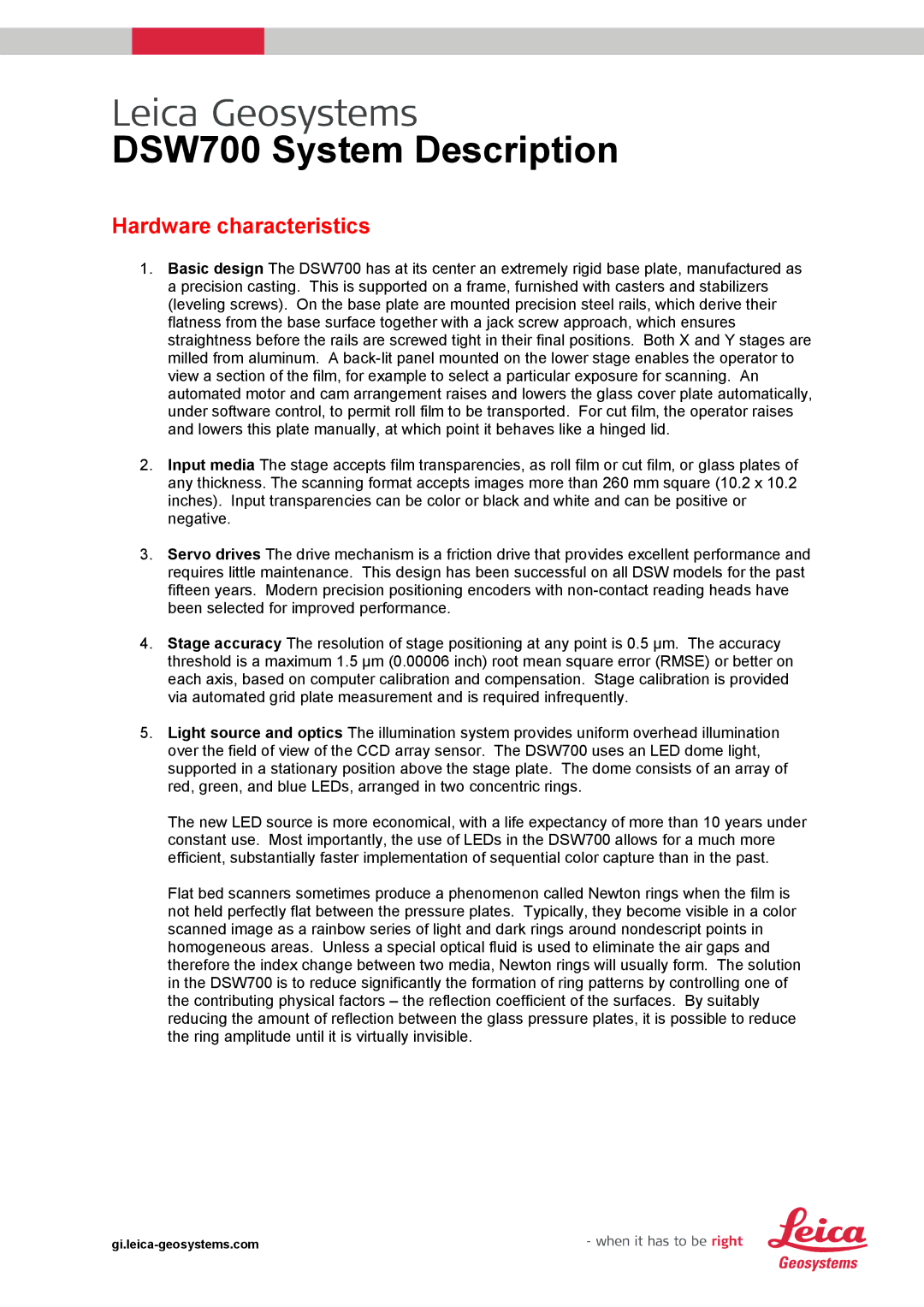
DSW700 System Description
Hardware characteristics
1.Basic design The DSW700 has at its center an extremely rigid base plate, manufactured as a precision casting. This is supported on a frame, furnished with casters and stabilizers (leveling screws). On the base plate are mounted precision steel rails, which derive their flatness from the base surface together with a jack screw approach, which ensures straightness before the rails are screwed tight in their final positions. Both X and Y stages are milled from aluminum. A
2.Input media The stage accepts film transparencies, as roll film or cut film, or glass plates of any thickness. The scanning format accepts images more than 260 mm square (10.2 x 10.2 inches). Input transparencies can be color or black and white and can be positive or negative.
3.Servo drives The drive mechanism is a friction drive that provides excellent performance and requires little maintenance. This design has been successful on all DSW models for the past fifteen years. Modern precision positioning encoders with
4.Stage accuracy The resolution of stage positioning at any point is 0.5 µm. The accuracy threshold is a maximum 1.5 µm (0.00006 inch) root mean square error (RMSE) or better on each axis, based on computer calibration and compensation. Stage calibration is provided via automated grid plate measurement and is required infrequently.
5.Light source and optics The illumination system provides uniform overhead illumination over the field of view of the CCD array sensor. The DSW700 uses an LED dome light, supported in a stationary position above the stage plate. The dome consists of an array of red, green, and blue LEDs, arranged in two concentric rings.
The new LED source is more economical, with a life expectancy of more than 10 years under constant use. Most importantly, the use of LEDs in the DSW700 allows for a much more efficient, substantially faster implementation of sequential color capture than in the past.
Flat bed scanners sometimes produce a phenomenon called Newton rings when the film is not held perfectly flat between the pressure plates. Typically, they become visible in a color scanned image as a rainbow series of light and dark rings around nondescript points in homogeneous areas. Unless a special optical fluid is used to eliminate the air gaps and therefore the index change between two media, Newton rings will usually form. The solution in the DSW700 is to reduce significantly the formation of ring patterns by controlling one of the contributing physical factors – the reflection coefficient of the surfaces. By suitably reducing the amount of reflection between the glass pressure plates, it is possible to reduce the ring amplitude until it is virtually invisible.
